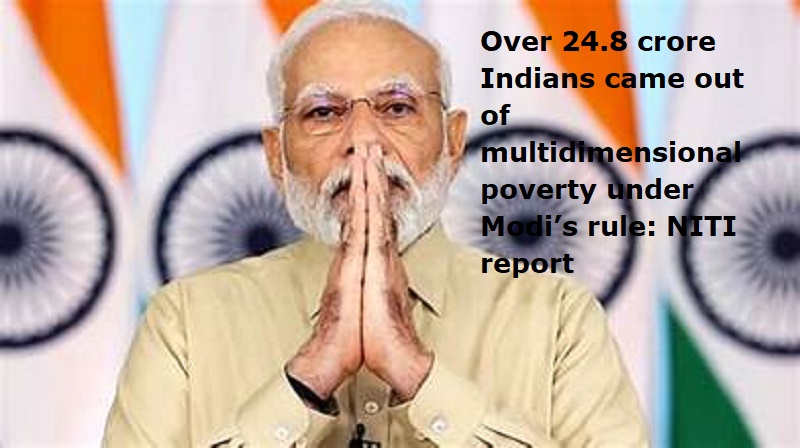
New Delhi: More than 25 crore Indians came out of multidimensional poverty under Narendra Modi’s rule. A report published by the Niti Aayog revealed this.
As per the NITI discussion paper published by the authority, more than 24.82 crore people moved out of multidimensional poverty in 9 years to 2022-23. The multidimensional poverty in India declined from 29.17 per cent in 2013-14 to 11.28 per cent in 2022-23.
Uttar Pradesh, Bihar and Madhya Pradesh registering the largest decline. Uttar Pradesh topped the list with 5.94 crore people escaping poverty followed by Bihar at 3.77 crore and Madhya Pradesh at 2.30 crore.
Also Read: Commodity Market: Gold price slips down marginally
The national multidimensional poverty measures simultaneous deprivations across three equally weighted dimensions of health, education, and standard of living that are represented by 12 sustainable development goals-aligned indicators, according to NITI Aayog. These include nutrition, child and adolescent mortality, maternal health, years of schooling, school attendance, cooking fuel, sanitation, drinking water, electricity, housing, assets, and bank accounts. The National Multidimensional Poverty Index (MPI) by Niti Aayog uses the Alkire Foster methodology to assess the decline in poverty rates. However, the National MPI covers 12 indicators while global MPI covers 10 indicators.
The paper said India is all set to reach single-digit poverty levels during 2024. The paper also said India is likely to achieve Sustainable Development Goals (SDGs) 1.2 (reducing multidimensional poverty by at least half) much ahead of 2030.
The report said the recent National MPI was based on National Family Health Surveys 4 (2015-16) and 5 (2019-21). The National Family Health Survey (NFHS-5) conducted between 2019-21 showed that the multidimensional poverty rate in India stood at 14.96%. It was at 24.85% during the 2015-16 NFHS-4 survey period.
The paper also revealed a decline in multidimensional poverty across different areas, noting a fall from 32.59% to 19.28% in rural regions and from 8.65% to 5.27% in urban locales between 2015-16 and 2019-21.

Post Your Comments